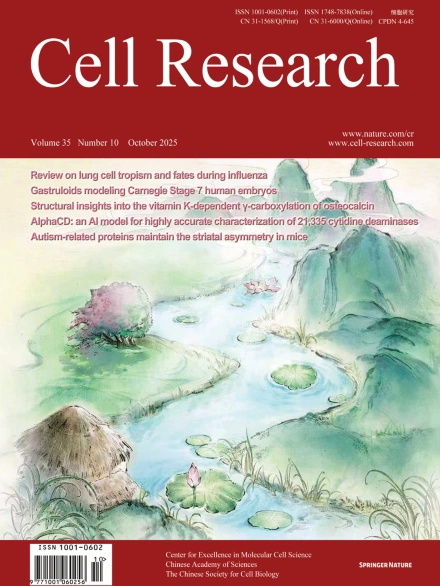
Advanced Search
Submit Manuscript
Advanced Search
Submit Manuscript
Volume 35, No 10, Oct 2025
ISSN: 1001-0602
EISSN: 1748-7838 2018
impact factor 17.848*
(Clarivate Analytics, 2019)
Volume 35 Issue 10, October 2025: 707-718 |
Lung cell fates during influenza
Brianna Jarboe1,2 , Maria Shubina2 , Ryan A. Langlois3 , David F. Boyd4 , Siddharth Balachandran2,*
1Drexel University College of Medicine, Philadelphia, PA, USARoughly 1 billion people are infected by Influenza A viruses (IAVs) worldwide each year, resulting in approximately half a million deaths. Particularly concerning is the threat of IAV spillover from avian and other animal reservoirs. The recent outbreak of highly pathogenic avian influenza H5N1 in US dairy cows highlights this concern. While viruses that enter human populations from such zoonotic transmission typically lack the ability to transmit effectively between humans, they may be only a few mutations from acquiring this capacity. These newly adapted viruses have the potential to be significantly more virulent than seasonal strains. A major contributor to influenza pathology is the over-exuberant immune response to the virus, particularly when the infection is present in distal pulmonary tissues. Maladaptive immune pathway over-activation can drive tissue damage and pathology, often independently of effective viral control. Anti-inflammatories targeting host-initiated pathological processes hold promise, but these avenues require a thorough understanding of virus-triggered lung inflammation before they can be fully exploited. In this review, we will discuss recent advances in our understanding of the cell types that are targeted by IAV, the consequences of IAV infection on the biology of these cells, and their contribution to lung pathology in influenza. We will also discuss how virus-induced hyper-inflammatory responses present new entry-points for therapeutic intervention, showcasing Z-form nucleic acid-binding protein 1 (ZBP1)-initiated necroptosis as an example of one such pathway.
https://doi.org/10.1038/s41422-025-01163-y